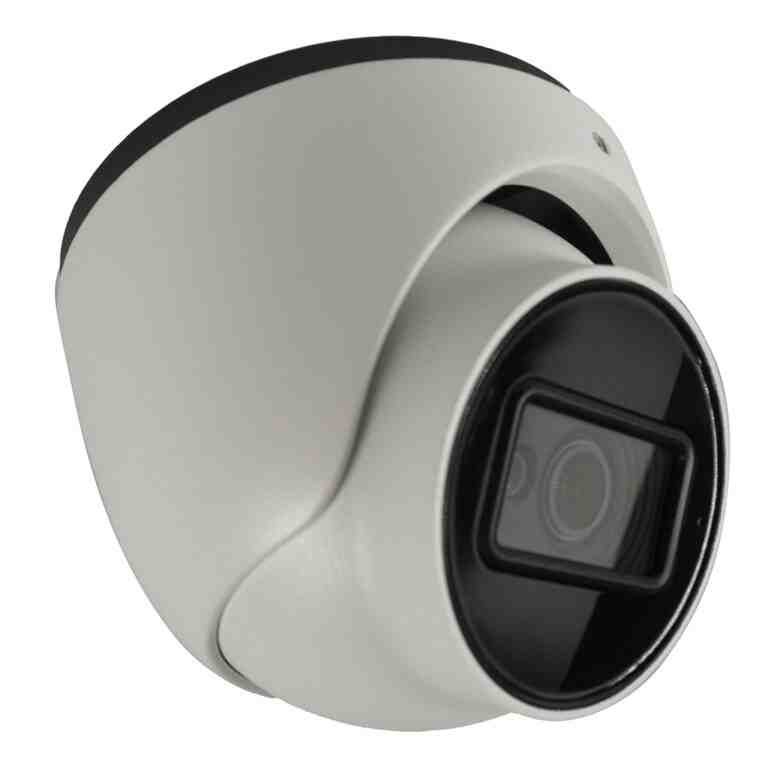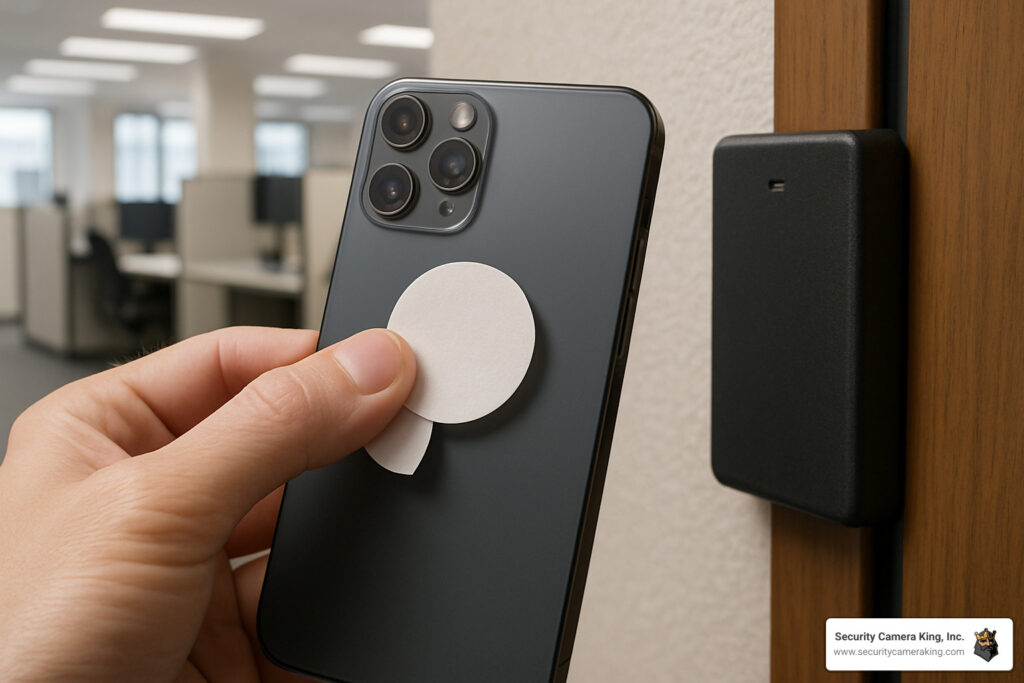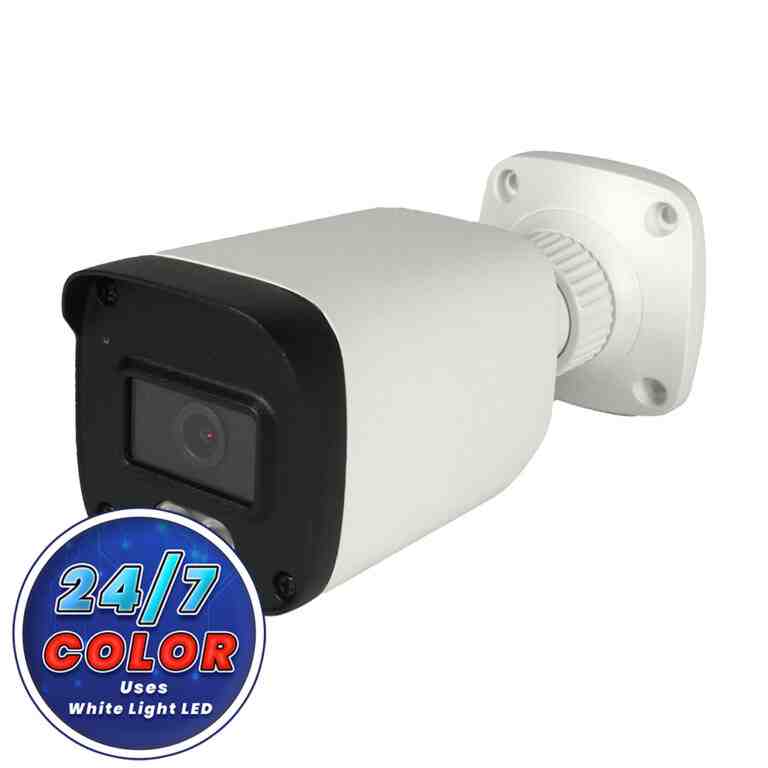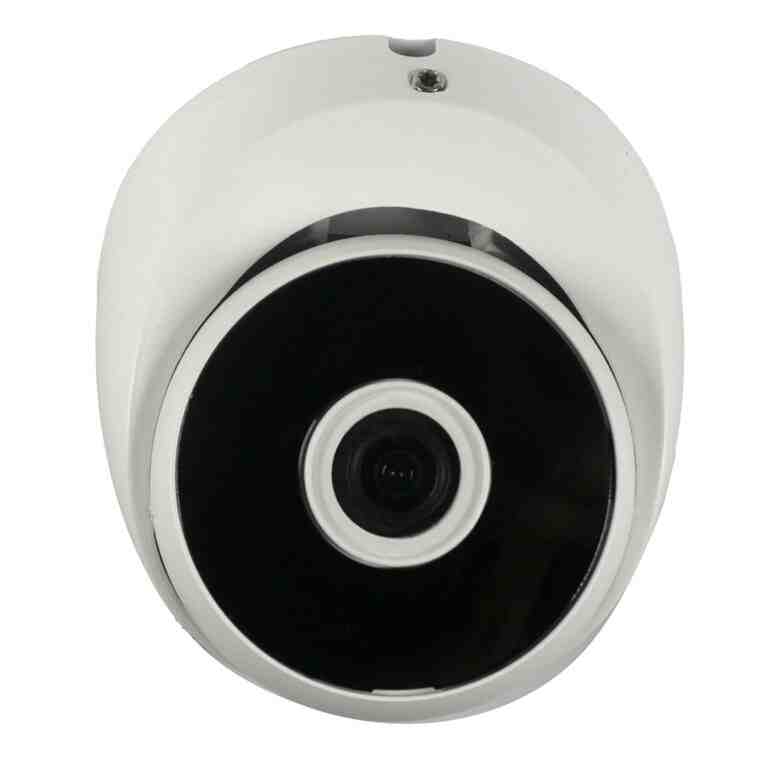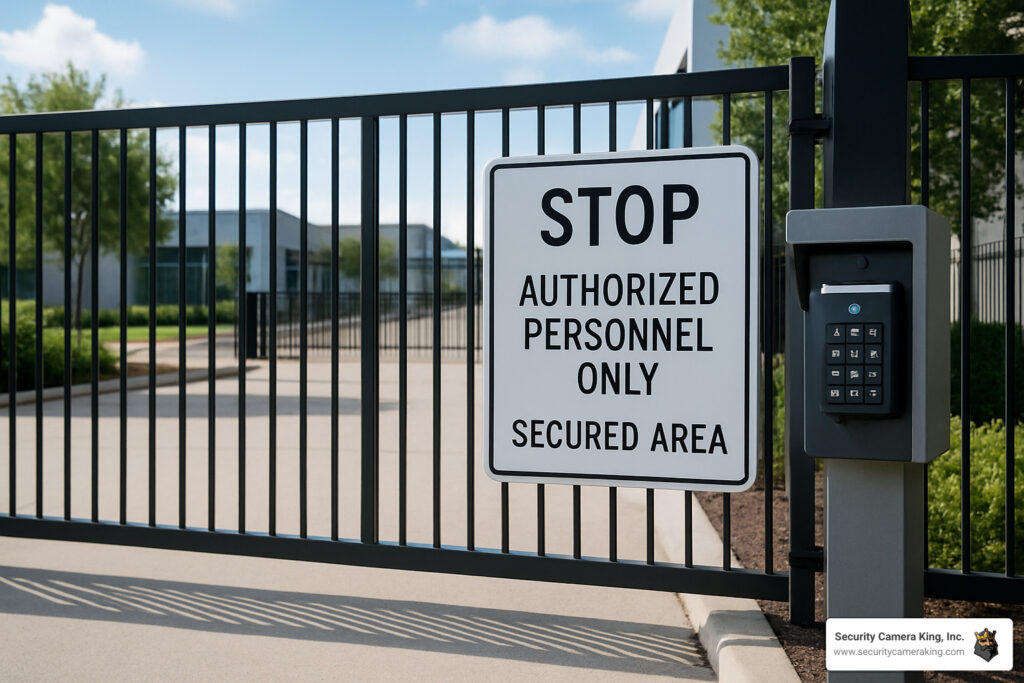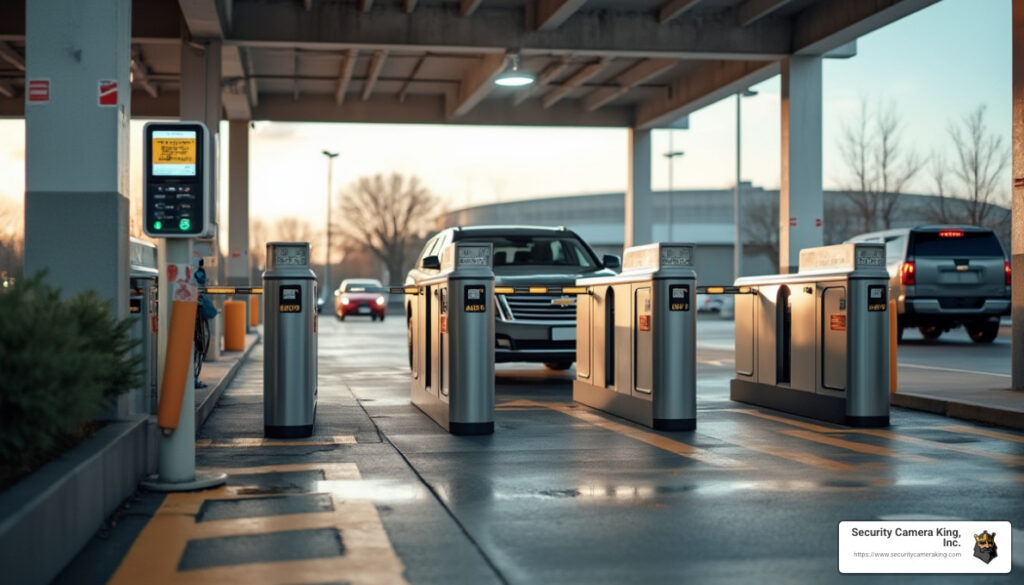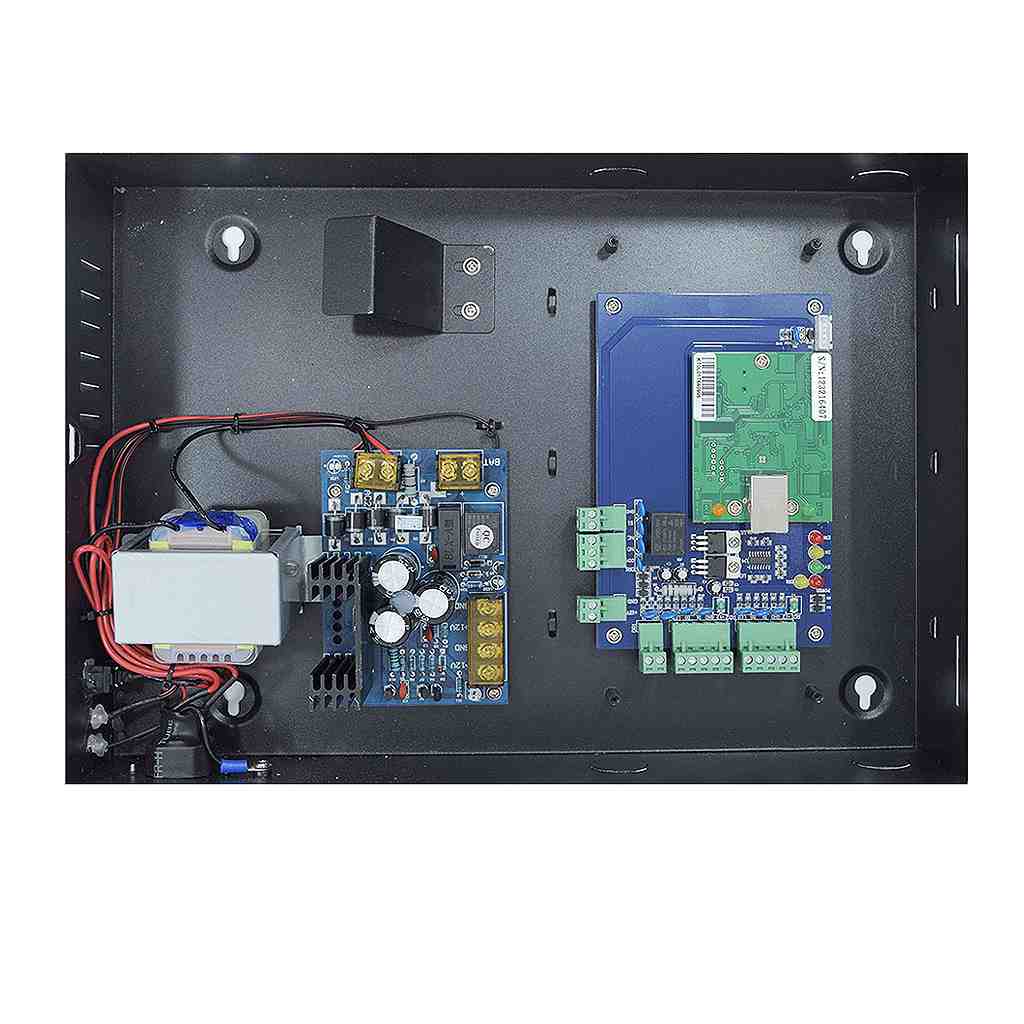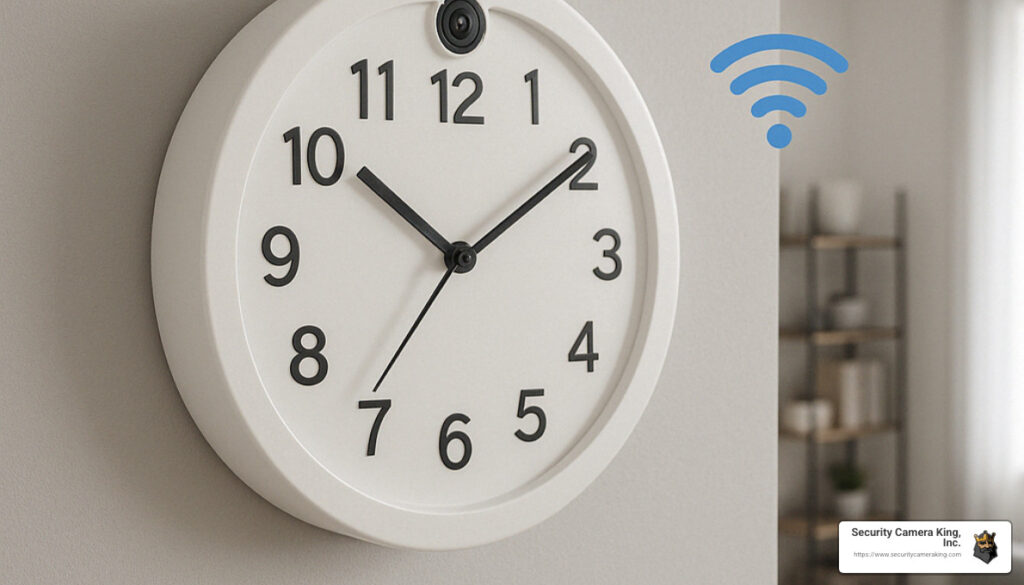Hd Cvi Tvi Ahd: Top 5 Powerful Reasons to Upgrade 2025
Why Understanding HD Analog Video Standards Matters
HD CVI TVI AHD are three analog video standards that let you upgrade old security systems to high-definition without rewiring. Here’s what you need to know:
| Standard | Full Name | Developer | Max Resolution | Max Distance |
|---|---|---|---|---|
| HD-CVI | High Definition Composite Video Interface | Dahua (2012) | Up to 4K | 400-500m |
| HD-TVI | High Definition Transport Video Interface | Techpoint/Hikvision | Up to 4K | 300-500m |
| HD-AHD | Analog High Definition | NextChip/Korea | Up to 1080p | 300-500m |
The biggest advantage? All three work over your existing coaxial cables – no expensive rewiring needed.
Remember those old movies with fuzzy, unrecognizable security footage? That was standard analog CCTV maxed out at 960H resolution. Today’s HD analog standards deliver crystal-clear 720p, 1080p, and even 4K video over the same coax cables that carried those grainy images.
The challenge is that each standard requires its own compatible DVR. You can’t mix an HD-CVI camera with an HD-TVI recorder – they speak different digital languages despite using the same physical cables.
As Brad Besner from Security Camera King, I’ve helped thousands of customers steer HD CVI TVI AHD choices over the past decade. The key is matching your specific needs – distance, resolution, and budget – to the right analog HD standard for seamless upgrades.

Why Analog HD Still Matters
In our Boca Raton facility, we regularly see customers torn between IP cameras and analog HD solutions. Here’s why analog HD remains relevant:
Bandwidth-Free Operation: Unlike IP cameras that consume network bandwidth, HD analog cameras transmit video directly to the DVR without affecting your internet or local network performance.
No Rewiring Required: Your existing RG59 or RG6 coaxial cables can carry HD signals up to 500 meters without signal boosters. Compare this to IP cameras over CAT5/6 cable, which typically max out at 325 feet without specialized extenders.
Latency-Free Monitoring: HD analog provides real-time video with zero delay. IP cameras often introduce latency due to compression and network processing, which can be critical in security applications requiring immediate response.
What Are the Main HD Analog Video Standards?
When customers ask me about HD CVI TVI AHD standards, I like to explain them as three different “languages” that all accomplish the same goal – sending high-definition video over your existing coax cables.
HD-CVI (High Definition Composite Video Interface) came first when Dahua introduced it in 2012. Think of it as the pioneer that proved HD over coax was possible. CVI uses something called quadrature amplitude modulation – fancy words that basically mean it keeps the video signal clean by separating brightness and color information so they don’t interfere with each other.
HD-TVI (High Definition Transport Video Interface) followed as an open-source standard created by Techpoint. This openness made it incredibly popular with manufacturers, and it’s become the most widely adopted analog HD format here in the United States. You’ll find TVI cameras from dozens of brands because anyone can license the technology.
HD-AHD (Analog High Definition) was developed by NextChip in Korea. While it started with budget manufacturers, major companies like Hanwha Vision eventually adopted AHD, giving it serious credibility in the security world.
All three standards work by taking digital HD video and converting it to analog signals that travel over coax – the opposite of what your old CVBS (Composite Video Baseband Signal) system did. CVBS was the original analog standard that mixed color, brightness, and timing signals together, which limited it to that fuzzy 960H resolution we all remember.
The key thing to understand? Each standard needs its own compatible DVR. A CVI camera won’t work with a TVI recorder, even though they use identical cables and connectors.
More info about HD-CVI technology
CVBS vs. HD Analog: The Resolution Leap
Here’s where things get exciting. The jump from old-school CVBS to any HD CVI TVI AHD standard is like going from a flip phone to a smartphone.
Your old CVBS system maxed out at 960H resolution – that’s roughly 700 TV lines of detail. Good enough to see that someone was there, but forget about identifying faces or reading license plates.
HD analog starts at 720p (1280×720 pixels), which delivers about 450% more detail than CVBS. That’s the difference between “someone broke in” and “here’s exactly what they look like.”
Most HD analog systems run 1080p (1920×1080), giving you four times the resolution of legacy analog. At this level, you can read documents, see facial features clearly, and capture evidence that actually holds up in court.
The newest HD analog systems push 4K (3840×2160) over the same coax cables that used to carry those grainy CVBS images. It’s honestly amazing what these cables can handle when you send the right signals through them.
The best part? You get this massive quality boost without rewiring a single cable. Your existing coax infrastructure handles HD signals beautifully, often better than it ever handled the old composite video.
Scientific research on composite video
HD CVI TVI AHD – How They Work & How They Differ
Think of HD CVI TVI AHD standards like three different languages that all accomplish the same goal – delivering crystal-clear HD video over your existing coax cables. While they can’t talk to each other directly, they’re surprisingly similar in what they can do.
All three use clever modulation techniques to squeeze high-definition video into the same frequency space that once carried grainy analog signals. It’s like fitting a sports car engine into a classic car body – same exterior, dramatically better performance.
| Feature | HD-CVI | HD-TVI | HD-AHD |
|---|---|---|---|
| 720p Distance | 400m | 350m | 350m |
| 1080p Distance | 250m | 250m | 320m |
| Frame Rates | 720p@60fps, 1080p@30fps | 720p@60fps, 1080p@30fps | 720p@60fps, 1080p@30fps |
| Audio Support | Yes | Yes | Yes |
| PTZ Control | Yes | Yes | Yes |
| Power over Coax | Yes (PoC) | Yes (PoC) | Limited |
The differences often come down to chipset costs and manufacturing choices. AHD cameras typically use less expensive chipsets (around $6.50), while HD-CVI cameras use slightly pricier components (about $10). This cost difference usually translates to HD-CVI offering better low-light performance and longer transmission distances.

Inside the Signal: hd cvi tvi ahd Explained
Here’s where things get really interesting. Each HD CVI TVI AHD standard uses sophisticated tricks to make HD video work on cables designed decades ago for much simpler signals.
Quadrature amplitude modulation is HD-CVI’s secret weapon. This fancy term basically means it separates different types of signal information so they don’t interfere with each other. Think of it like having separate lanes on a highway – video data stays in its lane, and legacy analog signals stay in theirs.
Bandwidth allocation is where all three standards shine. Your coaxial cables have plenty of unused frequency space that was never needed for old analog signals. These HD standards cleverly use that empty space to carry much more detailed video information.
The real magic happens with audio and PTZ control over the same coax. Remember the old days when you needed separate wires for audio and camera control? Now everything travels down one cable – video, audio, and the signals that let you pan, tilt, and zoom your cameras remotely.
Performance Showdown for hd cvi tvi ahd
After years of testing these systems in real installations, we’ve learned that the differences matter more in some situations than others.
Resolution capabilities have evolved differently across the three standards. While all started with 720p and 1080p support, HD-CVI and HD-TVI have pushed into 4K territory with their latest versions. HD-AHD has generally stayed focused on perfecting 1080p performance rather than chasing higher resolutions.
Distance performance varies more than you might expect. HD-TVI 3.0 technology is the long-distance champion, pushing 720p video up to 1200 meters and 1080p up to 800 meters over standard coax. That’s nearly three-quarters of a mile for 720p – impressive for any video standard.
Latency testing reveals one of the biggest advantages of all analog HD standards. While IP cameras often introduce 200-500 milliseconds of delay due to compression and network processing, HD CVI TVI AHD systems deliver truly real-time video with no perceptible delay.
Hybrid compatibility has become a game-changer for installers. Modern 4-in-1 cameras can switch between CVI, TVI, AHD, and even legacy CVBS modes using a simple onboard control. This means you can stock one camera type and adapt it to work with whatever DVR system your customer already has.
Installing & Mixing Cameras the Smart Way
Getting your HD CVI TVI AHD installation right the first time saves headaches down the road. After helping thousands of customers upgrade their systems, I’ve learned that success comes down to understanding your cables, connectors, and how everything plays together.
RG59 and RG6 coaxial cables are your workhorses for HD analog installations. If you’re working with distances under 300 feet, your existing RG59 Siamese cable will handle the job beautifully. For longer runs up to 500 meters, RG6 gives you that extra transmission power you need to maintain crystal-clear HD signals.
Don’t have coax already installed? No problem. UTP cable with baluns opens up new possibilities. You can run HD CVI TVI AHD signals over standard CAT5e or CAT6 network cable using passive video baluns. HD-CVI pushes up to 400 meters for 720p over UTP, while HD-TVI typically maxes out around 200 meters. It’s not quite as robust as coax, but it’s perfect when you need to snake cables through tight spaces.
Here’s where things get exciting: Power over Coax (PoC) technology means you can send power, video, and data down a single coaxial cable. No more running separate power lines to each camera location. Your electrician will thank you, and your installation time gets cut in half.
The beauty of HD analog? BNC connectors remain exactly the same as your old analog system. Those familiar twist-and-lock connectors you’ve been using for years work perfectly with modern HD signals. Physical compatibility means faster upgrades and fewer surprises.
More info about 4-in-1 technology

Re-Using Existing Coax—Best Practices
Your existing coax can absolutely handle HD CVI TVI AHD signals, but it needs to be in good shape. Think of HD signals as more demanding passengers than the old analog signals that used to ride those cables.
Signal testing comes first. Grab a multimeter and check that your coax shows proper 75-ohm impedance and solid continuity from end to end. Loose connections that barely affected grainy analog video will turn your crisp HD image into a pixelated mess.
Ground loops are the silent killers of HD analog installations. When cameras and DVRs have different ground potentials, you get nasty interference patterns. Proper grounding at both ends eliminates this headache before it starts. Trust me, fixing ground loop issues after installation is no fun.
Surge protection becomes critical with HD analog cameras. These sophisticated devices are more sensitive to voltage spikes than their analog predecessors. A good surge protector on outdoor cameras saves expensive replacements during storm season.
When using passive versus active baluns for UTP installations, passive baluns keep things simple for shorter runs and don’t need power. Active baluns extend your range but add another component that could potentially fail. Choose based on your specific distance requirements.
Hybrid DVRs: Bridge to Tomorrow
Hybrid DVRs are game-changers for gradual system upgrades. These flexible recorders support analog channels for your existing CVBS cameras, HD analog channels for your new HD CVI TVI AHD cameras, and IP channels for network cameras that might come later.
This phased upgrade approach means you don’t have to replace everything at once. Keep your existing cameras running while you upgrade the most critical areas first. Your budget stretches further, and you maintain security coverage throughout the transition.
The beauty of tribrid technology is future-proofing. Start with analog HD today, then add IP cameras tomorrow when your network infrastructure catches up. No need to predict the future perfectly when your DVR can handle whatever direction technology takes you.
More info about passive video baluns
Choosing the Right Flavor for Your Project
Selecting between HD CVI TVI AHD depends on several factors:
Budget Considerations: AHD typically offers the lowest entry cost, with camera modules around $6.50 compared to $10 for HD-CVI. However, cheaper often means lower build quality from no-name manufacturers.
Distance Requirements: For long cable runs, HD-TVI 3.0 offers the best performance with 1200m capability for 720p. HD-CVI follows closely at 400-500m.
Resolution Needs: If 4K is in your future, choose HD-CVI or HD-TVI. HD-AHD typically caps at 1080p.
Future-Proofing: Consider 4-in-1 cameras that can switch between standards, providing maximum flexibility as your system evolves.
Environment and Lighting: For low-light applications, HD-TVI cameras with Starlight technology can deliver color images in near-darkness, improving forensic value.
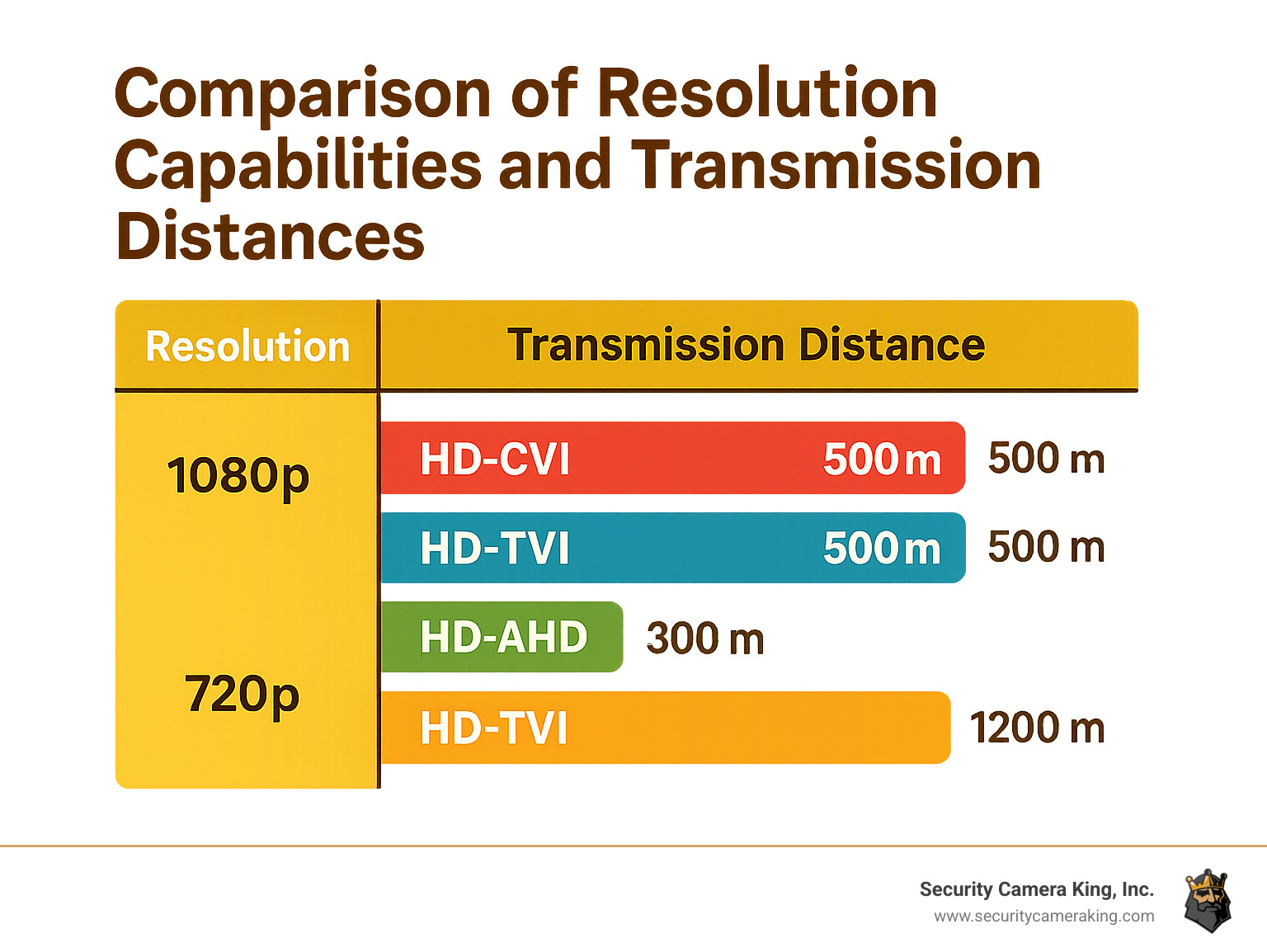
When to Pick CVI, TVI, or AHD
Choose HD-CVI when:
– You need proven reliability from an established manufacturer
– Power over Coax is important for simplified installations
– Medium to long cable runs (up to 500m) are required
Choose HD-TVI when:
– Maximum transmission distance is critical (up to 1200m for 720p)
– You want the most popular U.S. standard with broad manufacturer support
– Starlight low-light performance is important
Choose HD-AHD when:
– Budget is the primary concern
– You need backward compatibility with CRT monitors
– Standard 720p/1080p resolution meets your needs
Analog HD vs. IP: Quick Decision Tree
Choose Analog HD when:
– Network bandwidth is limited or expensive
– Real-time monitoring with zero latency is critical
– Existing coax infrastructure is in good condition
– Installation simplicity is important
Choose IP when:
– Resolutions above 4K are required
– Advanced analytics and smart features are needed
– Network infrastructure is robust and available
– Remote management and configuration is important
Frequently Asked Questions about CVI, TVI, and AHD
When helping customers steer HD CVI TVI AHD systems at Security Camera King, these three questions come up constantly. Let me share the answers that will save you headaches down the road.
Are these cameras cross-compatible with any DVR?
Here’s the short answer that might surprise you: absolutely not. This is probably the biggest gotcha in the HD analog world.
Think of it like trying to play a Blu-ray disc in a DVD player. The physical connection looks identical, but the digital language is completely different. An HD-CVI camera speaks a totally different dialect than an HD-TVI recorder, even though they both use the same BNC connector and coaxial cable.
This compatibility issue has caught many installers off guard. You’ll plug everything in, see a signal on the monitor, but get garbled video or no picture at all.
The good news? Modern 4-in-1 hybrid DVRs solve this problem completely. These smart recorders can decode all three formats plus legacy CVBS. Even better, 4-in-1 cameras can switch between standards using a tiny joystick on the camera body, giving you maximum flexibility.
What cable length can I push before adding repeaters?
Distance limits vary significantly between the three standards, and knowing these numbers can make or break your installation.
HD-TVI takes the crown for long-distance transmission. With TVI 3.0 technology, you can push 720p video up to 1200 meters and 1080p up to 800 meters over standard coaxial cable. That’s nearly three-quarters of a mile for 720p!
HD-CVI comes in second with solid performance up to 400 meters for 720p and 250 meters for 1080p over RG59 cable. Upgrade to RG6, and you can stretch these distances even further.
HD-AHD is more modest but still respectable at 350 meters for 720p and 320 meters for 1080p over standard coax.
Beyond these distances, your image quality will start degrading noticeably. You’ll see artifacts, color shifts, or complete signal loss. The solution is adding active baluns or signal repeaters at strategic points along your cable run.
Do CVI, TVI, AHD support audio & PTZ on the same cable?
This is where HD CVI TVI AHD systems really shine compared to old-school analog setups. Yes, all three standards can carry video, audio, and PTZ control over a single coaxial cable.
Remember the rat’s nest of cables in legacy analog systems? Separate video cables, audio wires, PTZ control lines, and power runs created installation nightmares. Modern HD analog eliminates most of this complexity.
Power over Coax (PoC) takes this convenience even further. With PoC-enabled cameras and DVRs, you can send power up the same coaxial cable that carries your video signal. This creates a true single-cable solution – one RG59 or RG6 cable handles everything.
The audio quality is surprisingly good too, with clear two-way communication possible on most systems. PTZ control is responsive and reliable, letting you pan, tilt, and zoom without the lag you might experience with IP cameras.

Conclusion
After years of helping customers steer security upgrades at Security Camera King, I’ve seen how HD CVI TVI AHD standards have transformed what’s possible with analog systems. These technologies prove that you don’t need to rip out perfectly good coaxial cables to achieve crystal-clear HD video.
The real magic happens when you realize that one simple coax cable can now carry everything – your HD video signal, crystal-clear audio, PTZ camera control, and even power. That’s a complete security solution running through the same cable that used to struggle with grainy 960H images.
Whether you choose HD-CVI for its rock-solid reliability, HD-TVI for those impressive long-distance runs, or HD-AHD for budget-conscious projects, you’re making a smart investment that builds on your existing infrastructure. Each standard has earned its place in the market by solving real problems for real customers.
The cost-benefit equation is compelling. Instead of expensive network upgrades and cable replacement projects, you get immediate HD quality while preserving every dollar you’ve already invested in coaxial infrastructure. Your existing RG59 or RG6 cables become the foundation for a modern, high-definition security system.
At our Boca Raton facility, we’ve guided thousands of customers through these upgrade decisions. The most successful projects happen when you match the technology to your specific needs – considering distance requirements, resolution goals, and future expansion plans.
The upgrade path is clear, the technology is proven, and the results speak for themselves. HD CVI TVI AHD standards have given analog systems a new lease on life, delivering professional-grade video quality without the complexity of IP networks.
Ready to explore what’s possible with your existing coax? Our technical support team is here to help you choose the right analog HD solution for your specific situation.

